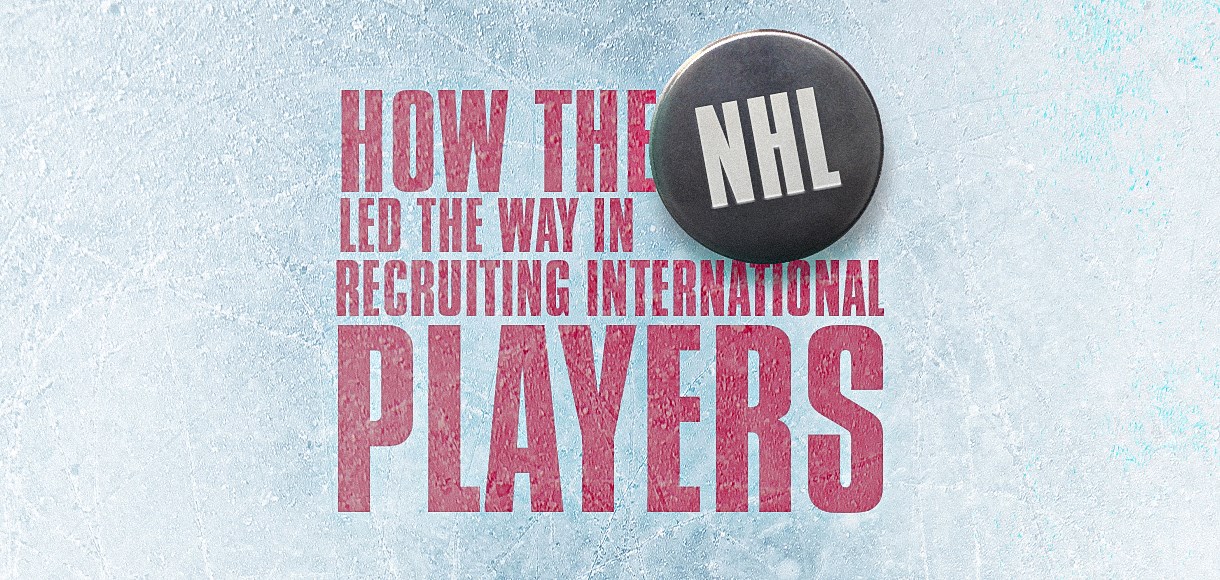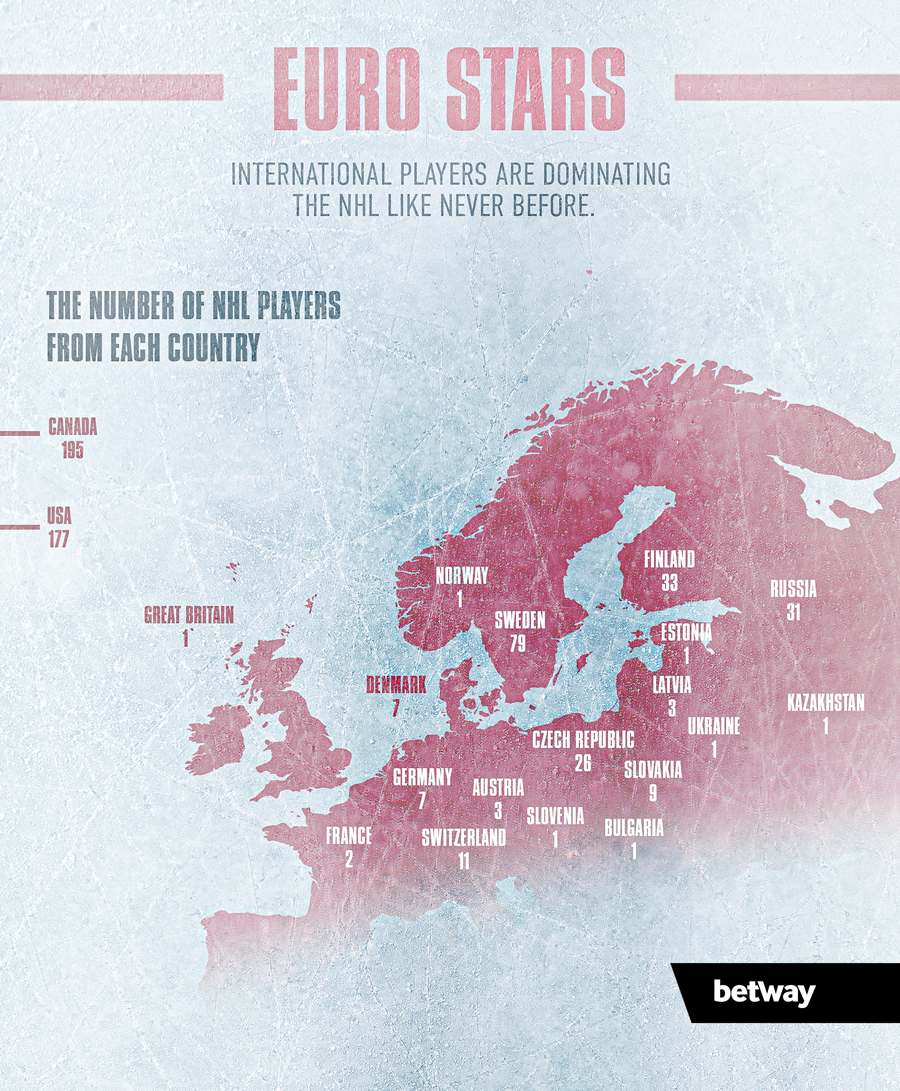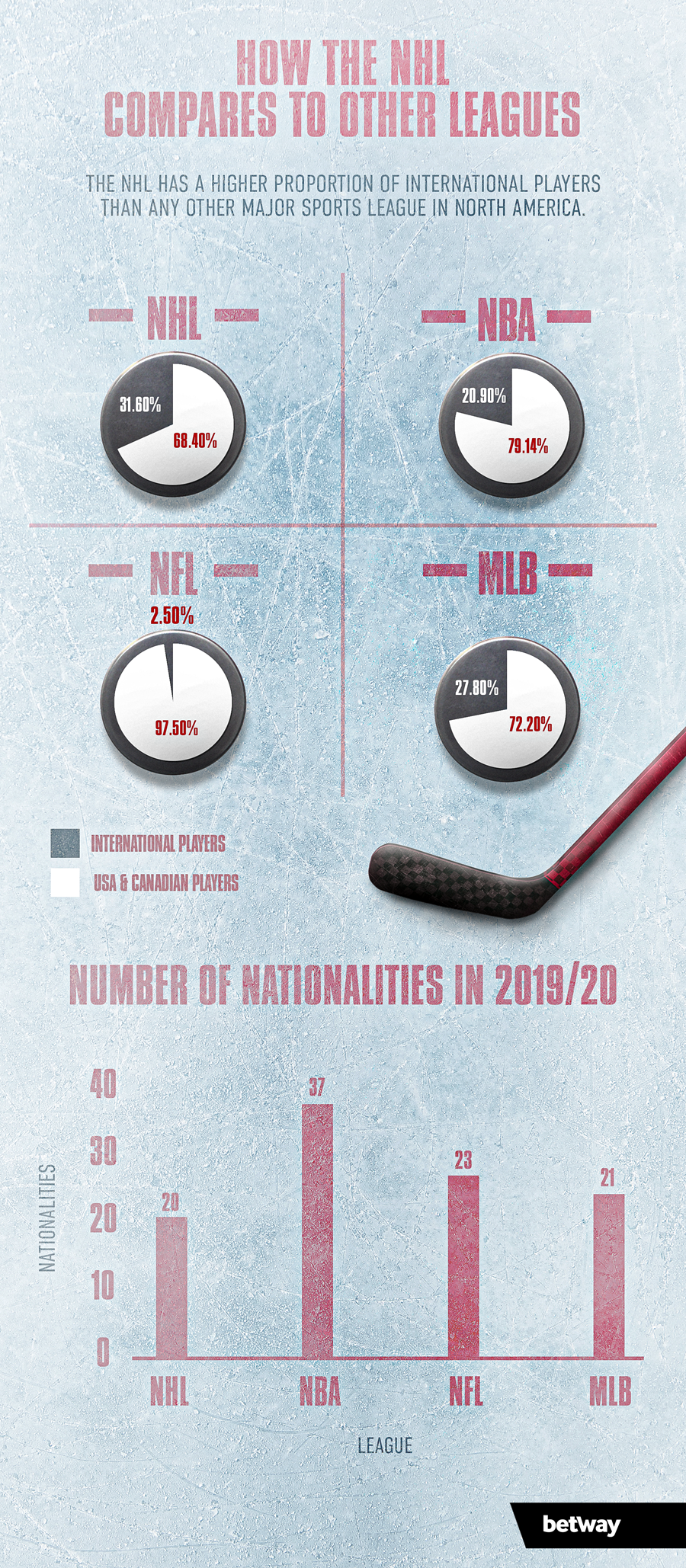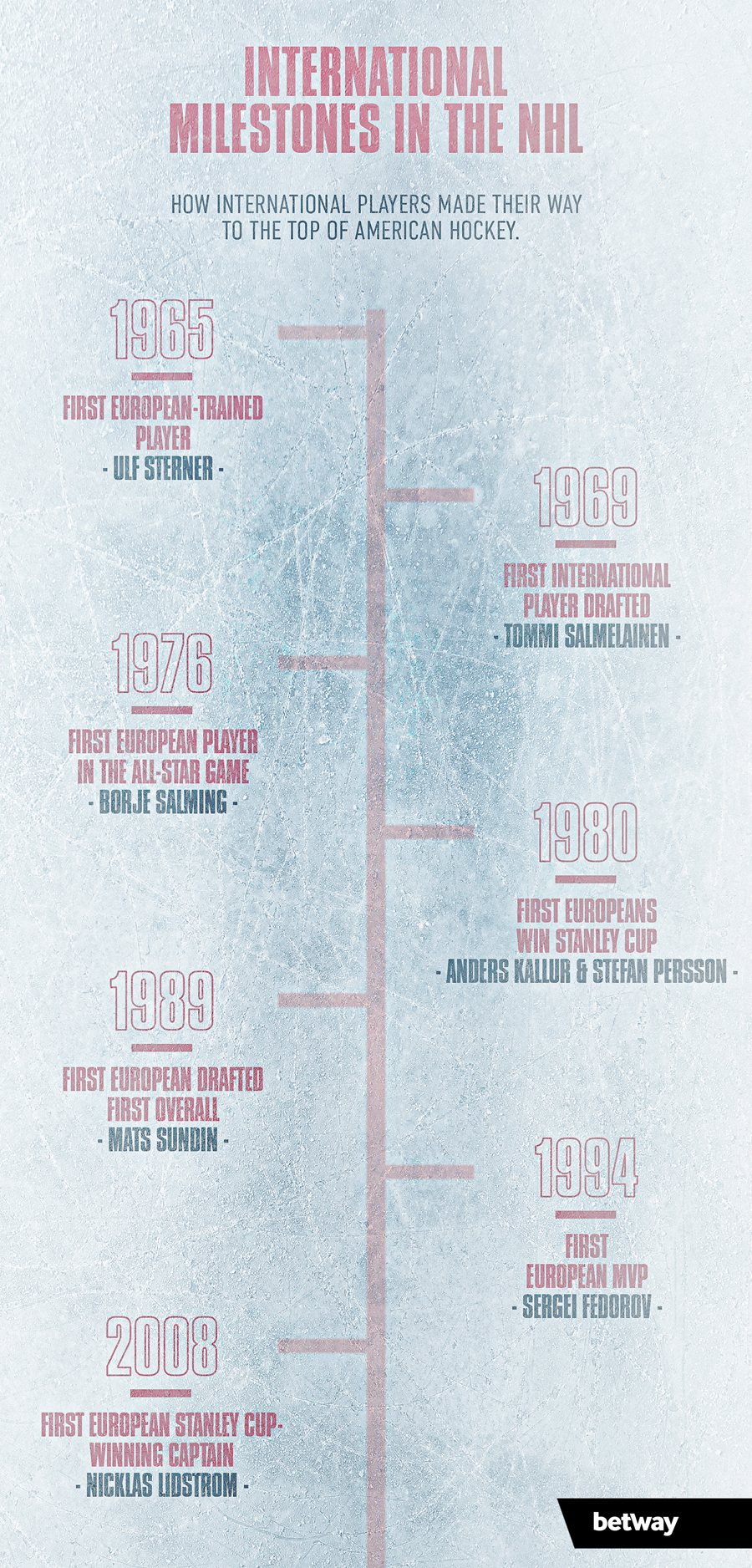How the NHL led the way in recruiting international players

Despite taking 48 years to recruit from overseas, the NHL now has the highest proportion of international players among North America's four major leagues.
When the National Hockey League was established in November 1917, the First World War was yet to end and the Russian Revolution had just begun.
By the time the first international player entered the NHL, in January 1965, the Second World War had been over for 20 years and Russia had put a man into space.
It may have taken 48 years for the league to go international as the New York Rangers – who are to win the 2020 Stanley Cup in the NHL betting – signed Swedish forward Ulf Sterner, but it has more than made up for that in the years since.
The NHL is now arguably the most international league in North America, with foreign-born players influencing the sport like never before.
Which countries do NHL players come from?

Despite an influx of players from around the world over the past 50 years, it is hardly surprising that Canadians remain the backbone of the NHL.
Of the 690 players that were named on NHL rosters for opening night of the 2019/20 season, 295 hailed from Canada. That is nearly half – 42.8% to be exact.
And with 24 of the 31 NHL teams based in the USA, it is again unsurprising that American players make up the second-biggest group in the NHL.
There were 177 players from the USA named on opening-night rosters this season – just over a quarter of the whole league.
In total, players from North America remain the largest group in the NHL, with 472 players – or 68.4% - coming from either Canada or the USA.
That means that 31.6% of NHL players are from elsewhere in the world – in this case, mostly Europe.

The dominant European countries are Sweden (79 players), Finland (33 players), Russia (31 players), Czech Republic (26 players), Switzerland (11 players) and Slovakia (9 players).
These are all traditional hockey powerhouses, with all but Switzerland having won the IIHF World Championships at some point.
It is, however, the presence of players from places such as the United Kingdom, Bulgaria and Kazakhstan – nations with little hockey pedigree – that really illustrates the growing globalisation of the NHL.
How does the NHL compare to other sports?

Increasing numbers of international players is not a phenomenon limited to hockey – all four major leagues in North American sport have experienced similar growth in recent years.
The NHL does, however, have a higher proportion of international players than any of the other major American sports leagues – the NBA, NFL and MLB – at 31.6%.
MLB isn’t far behind, with 245 of 882 players on opening day rosters in 2019 coming from countries outside the USA and Canada, equating to 27.8%.
In the NBA, meanwhile, 92 international stars accounted for 20.9% of players on opening day rosters at the start of this season.
Somewhat unsurprisingly, the NFL lags far behind any other major league with just 43, or 2.5% of 1,696 players on 2019 opening day coming from a country outside of North America.
The fact that American football is almost exclusively played in the US and Canada, while hockey, basketball and baseball each have a number of professional leagues worldwide, helps to explain this.
It is interesting to note, however, that despite such a low proportion of international athletes, the NFL has players from a wider range of nationalities than the NHL.
In fact, the 20 different nationalities represented in the NHL is the fewest among all four leagues, with the NFL having 23, MLB having 21 and the NBA leading the way with 37.
This can, once again, be explained relatively easily. Baseball, basketball and football can all be played in most weather conditions, with very little equipment. Hockey, meanwhile, requires a rink and skates, and is mainly played in countries with a cold climate.
How has the NHL changed over time?

To fully understand why the NHL has become the most internationally-dominated league in America, we must look at how things have changed since 1965.
Within 15 years of Sterner’s signing by the Rangers, European players had entered the draft, been selected for the All-Star Game, and won the Stanley Cup.
By the end of the 1980s there were still just 49 international players on NHL rosters, accounting for 12.25% of players.
Then, in 1989, everything changed.

With the very first pick in the entry draft that year, the Quebec Nordiques selected Swedish centre Mats Sundin, who became the first player from outside North America to achieve that feat.
Of the four major sports leagues, only the NBA preceded the NHL in drafting a foreign-born player with the first pick. The MLB did not do so until 2012, while this is yet to happen in the NFL.
This triggered an avalanche of international players into the NHL, as executives started to understand the wealth of hockey talent that was available across the Atlantic.
Within 10 years, by the start of the 1999/00 season, the number of international players in the NHL had more than tripled. Players from outside North America now numbered 157, making up 29% of the league’s rosters.
The number of international stars in the NHL has continued to increase in the 20 years since, with 218 foreign-born players named on opening-day rosters in 2019 as hockey leads the way among American sports for global participation.
As we look towards the future, there are signs to suggest that will continue.
According to the annual IIHF Survey of Players, there were more than 1.7m active hockey players worldwide in 2019. That number is up from 1.4m in 2009.
Ten years ago, there were 67 nations registered to the IIHF. The latest report shows there are now 79 registered countries, including active players in Algeria, North Korea, India and Thailand.
The development of top players from countries such as Great Britain, Bulgaria and Kazakhstan will only serve to stimulate that growth, putting the NHL in a strong position for the years to come.





































